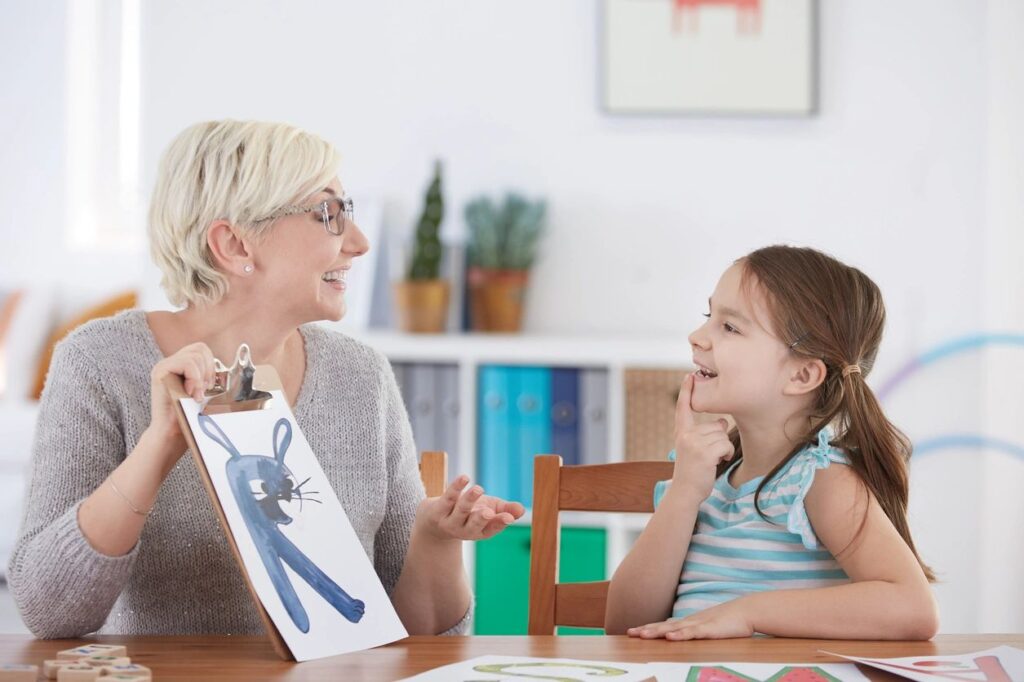There are a number of simple speech therapy techniques that parents can try for children with autism to help them develop their communication skills.
These techniques can be used at home and require minimal equipment or materials.
However, it’s important to consult with a speech therapist or a professional in child development to create an individualised plan for the child as every child is unique and have different needs.
Anticipation
Anticipation is a key tool for parents to use in order to try and tease the first words out of your child. A good example of anticipation would be holding them in a park swing in a pulled back “loaded” position. They naturally will want you to release them so count down “ready, steady…..” then leave a pause for them to say go.
Even if your child makes a noise then reward that with releasing the swing. As time goes by try to raise the threshold of what you accept as “go” to release the swing.
You can also use counting as a form of anticipation with an example being counting down from 5 before tickling or throwing your child in the air. As with ready, steady, go you should pause just prior to saying 1 in an attempt to prompt your child to fill the void.
Words everywhere
Parents should try and get in the habit of saying simple words throughout the day. An example could be if you are carrying your child down the stairs to audibly count each step.
Another example would be to talk through routine daily actions such as “light on” or “wash hands”.
Imitation
If your child has some speech repeat back what the child has said, but in a more complete sentence. This helps to expand the child’s vocabulary and improve their ability to express themselves. For example, if the child says “car,” you can respond with “Yes, that is a red car.”
Use gestures
Use gestures, such as pointing or nodding, to help the child understand what you are saying. This can also help them to learn to use gestures themselves, which can be an important form of communication for some children with autism.
Use visual aids
Use pictures or other visual aids to help the child understand and communicate. For example, you can use flashcards with pictures of objects, people, or actions to help the child learn new words.

Encourage social interactions
Encourage social interactions, such as playing with toys or participating in group activities, to help the child develop social skills. For example, playing with dolls, cars or blocks, playing pretend games and engaging in interactive activities such as singing and story-telling.
Use technology
There are many apps and programs available that can help to improve communication skills. These can include speech therapy apps, social skills training apps, and communication devices for children with autism.
Summary
Problems with speech is one of the most common signs of autism in a child but with therepy progress can be made.
It’s important to keep in mind that therapy should be fun, positive and patient. Reward the child’s efforts and set small goals to achieve as they progress.
Furthermore, it’s important to work closely with the child’s speech therapist, teachers and other professionals to ensure that the techniques used at home are consistent with those used in other settings.
Feel free to browse our archive or visit the UK’s autistic society website for tips and assistance.

